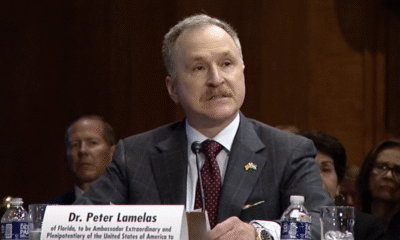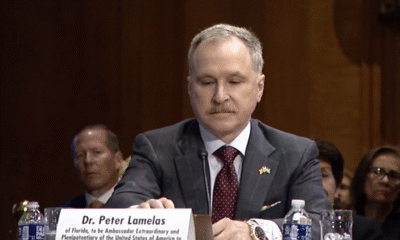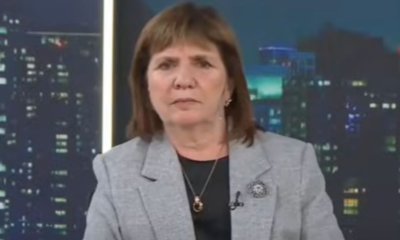INTERNACIONAL
Por qué “Los Juegos del Hambre” se convirtió en un fenómeno transgeneracional

Poco después de que Sean Connors regresara de las vacaciones de primavera, el profesor de educación en inglés de la Universidad de Arkansas preguntó a un aula llena de estudiantes si alguien había pasado sus vacaciones leyendo la quinta novela de Los juegos del hambre, recién publicada, Amanecer en la cosecha. Varias manos se alzaron y, como recordó, “se dio una conversación bastante buena”.
En retrospectiva, dijo, hubo un comentario que le llamó la atención: cuando una estudiante afirmó que el principal antagonista de la novela, el presidente Snow, es el villano de su generación. Si creciste en los años 80, explicó ella, Darth Vader era sinónimo de villano, y luego, por supuesto, los millennials tuvieron a Voldemort. Mientras que la Generación Z podría asentir con la cabeza en acuerdo con la estudiante de Connors, lo más interesante de esta afirmación podría ser que cuando salió la primera novela de Los juegos del hambre, en 2008, y se presentó a los lectores al tiránico presidente de Panem, los miembros más jóvenes de la Generación Z aún no habían nacido.
Ese largo reinado de villanía puede explicar, en parte, la popularidad de “Amanecer en la Cosecha”. ¿Esos adolescentes y veinteañeros que hicieron la trilogía original un éxito? Siguen ansiando los peores horrores que la autora Suzanne Collins puede imaginar. Pero también una generación de jóvenes que recurren a la ficción distópica, ya sea para escapar o reflexionar sobre estos, digamos, tiempos desafiantes.
Amanecer en la Cosecha es el libro juvenil de más rápida venta del año hasta ahora. Según la editorial Scholastic, solo en su primera semana, la novela vendió 1,5 millones de ejemplares en inglés en todo el mundo y el doble de copias en Estados Unidos en comparación con la entrega anterior de Collins, La balada de los pájaros cantores y las serpientes (2020).
En comparación con otras series, la longevidad de Los juegos del hambre es notable y también inusual por la forma en que su popularidad ha fluctuado. Brenna Connor, de Circana, que rastrea las ventas de libros, revisó los datos de ventas de los cinco libros —la trilogía original más las dos precuelas— y no se sorprendió por los primeros datos de ventas: Los tres lanzamientos iniciales vendieron muchas copias, y muchas más después del estreno de las cuatro adaptaciones cinematográficas entre 2012 y 2015.

“Estamos hablando de millones de unidades vendidas anualmente”, dijo. “Y ese es un patrón bastante típico para este tipo de series que tienen un seguimiento tan destacado y una adaptación de página a pantalla”.
Tampoco fue sorprendente la pausa que siguió al lanzamiento de la cuarta película, Sinsajo – Parte 2, en 2015: Aparecieron objetos nuevos y brillantes; los lectores siguieron adelante. Pero luego, en mayo de 2020, en pleno confinamiento por la pandemia, se lanzó la primera precuela. La respuesta a ese libro, centrado en la historia del origen del villano Coriolanus Snow, fue inicialmente más moderada que la fiebre por la compra de “Amanecer en la Cosecha”. Pero gradualmente ganó impulso, y Connor tiene un par de teorías al respecto. La primera es el estreno de la adaptación cinematográfica en 2023, que impulsó las ventas de toda la serie un 300 por ciento. La segunda, posiblemente más profunda, fue el auge de BookTok, la esquina de TikTok donde los lectores, predominantemente mujeres y niñas jóvenes, promocionan sus libros y autores favoritos. Durante los últimos cinco años, una de esas autoras ha sido Collins.
Como profesor y fanático, Thomas Paradis vio las oscilaciones de primera mano. En 2013, inició una conferencia sobre Los juegos del hambre en la Universidad del Norte de Arizona que estuvo tan llena, “el cuerpo docente no podía creerlo”, dijo. “No cabía ni un alma más en los salones de clases”. Y durante los últimos siete años, ha enseñado un curso sobre Los juegos del hambre en la Universidad Butler. Hubo un momento después de la trilogía y antes de las precuelas en que notó que había “cada vez menos interés” en la serie, dijo. “Casi se estaba convirtiendo en literatura histórica”.
“Y luego todos tuvimos la sorpresa de nuestras vidas”, recordó. “Nadie esperaba que Collins escribiera una precuela”. Y así, de repente, surgió una nueva generación de fans.

Holly Mandziak y Emily McGeary son anfitrionas del pódcast de Los juegos del hambre “Into the Arena” y recientemente ayudaron a organizar una fiesta de lanzamiento a medianoche para “Amanecer en la Cosecha” en Tattered Cover Book Store en Colorado. El evento incluyó juegos y concursos, “y nuestras ganadoras de trivias”, recordó Mandziak, “fueron niñas que probablemente tenían como 10 o 12 años”. (Si eso suena un poco joven para leer un libro sobre niños peleando a muerte, solo recuerden que internet existe). La amplia variedad de edades de los asistentes a la fiesta reflejó el perfil demográfico de los oyentes del pódcast de la pareja: la mayor parte de los oyentes tiene entre 23 y 27 años, seguido por quienes tienen entre 18 y 22 años, y entre 28 y 34 años. Pero también cuentan con oyentes menores de 17 años y mayores de 45 años.
Ver a niños preadolescentes interesarse en los libros hizo que Mandziak se sintiera algo nostálgica. Tenía 11 años cuando descubrió la primera novela en 2011. (McGeary, en tanto, comenzó a leer los libros en 2010, a los 16 años, “más o menos la edad de Katniss”).
Mandziak, McGeary y otros fanáticos de Los juegos del hambre parecen coincidir en que “La balada de los pájaros cantores y las serpientes” siempre iba a ser más difícil de vender que “Amanecer en la Cosecha”.
El protagonista del libro más reciente, Haymitch, “es un personaje fácil de apoyar”, dijo Stef Woods, quien impartió un curso sobre la franquicia de Los juegos del hambre en la Universidad Americana. Si el libro no lo dejó suficientemente claro, entonces la interpretación del personaje en las películas por parte de Woody Harrelson ciertamente lo hizo. El enfoque de “Balada” en Snow permitió a los lectores ver “momentos de su lado humano”, dijo Woods. “Pero en general, era malvado”. ¿Con quién preferirías pasar más de 400 páginas?
Pero eso plantea otra pregunta, que es, en nuestros tiempos divididos, ¿es una sorpresa que la gente opte por historias sobre sociedades opresivas?
No es la primera vez. “Desde el inicio del año, he visto más clásicos distópicos llegar a las listas de más vendidos, como Fahrenheit 451, Rebelión en la Granja o El cuento de la criada”, dijo Connor, de Circana. Vio una tendencia similar en 2017.
Las librerías le han dicho a Connor que muchos de los lectores que buscan estos títulos son jóvenes. “Y eso tiene sentido”, dijo, “porque eran mucho más jóvenes durante el primer mandato de Trump, y ahora que quizás tienen 16 o 18 años, están buscando estos libros que no habrían leído a menor edad para comprender mejor o explorar de forma segura estos temas distópicos”.
Tal vez, entonces, cada generación obtiene al villano que necesita. Esa es la forma en que lo ve Connors, el profesor de la Universidad de Arkansas: Si Star Wars jugó con nuestro temor colectivo a la aniquilación nuclear durante la Guerra Fría, la serie de Los juegos del hambre está canalizando ansiedades más actuales: sobre las desigualdades económicas, los regímenes autoritarios y las amenazas a las libertades civiles.
Existen razones por las cuales los lectores se identifican con Katniss, Haymitch y otros personajes cuyo destino les fue impuesto. “Ya sea por desastres naturales, ya sea por la economía, la política o la covid”, dijo Woods, “no nos ofrecimos como voluntarios para muchas cosas en nuestra realidad”.
Fuente: The Washington Post
artistas,california,escritores,estados unidos,estreno de ‘los juegos del hambre: la balada de pájaros cantores y serpientes’ en el teatro chino tcl en hollywood,mujer,noviembre de 2023.,películas,posado
INTERNACIONAL
Estados Unidos abatió a un importante líder del Estado Islámico en Siria

El Comando Central de Estados Unidos (Centcom) aseguró este viernes -en su cuenta de X- haber eliminado a “un importante líder” del Estado Islámico (ISIS por sus siglas en inglés), llamado Dhiya Zawba Muslih al Hardani, en un ataque en la mañana del viernes en la ciudad siria de Alepo.
El Centcom, responsable de las operaciones militares estadounidenses en la sensible región de Oriente Medio, no dio muchos detalles de la operación salvo el hecho de que junto al líder también fallecieron sus hijos adultos, Abdallah y Abd al Rahman, que igualmente militaban en el ISIS. Además, se informó que tres mujeres y tres niños que se encontraban con ellos resultaron ilesos.
Según el Centcom, los tres individuos que murieron en el operativo constituían una amenaza “tanto para las fuerzas estadounidenses, como para el nuevo gobierno sirio”.
No queda claro si la operación fue coordinada con el gobierno de Damasco o si fue decidida y ejecutada unilateralmente por Estados Unidos, que se reserva el derecho de actuación en el territorio sirio, área que el gobierno provisional de Ahmed Al Sharaa no consigue controlar en su totalidad.
El pasado abril, el Centcom anunció que retiraba de Siria a unos mil soldados, ante la nueva realidad que supone un gobierno aceptado por la comunidad internacional, pero mantendrá en el país a otros tantos soldados con el objetivo de “degradar la capacidad de atracción del EI y su operatividad regional y global”.

“Continuaremos persiguiendo sin descanso a los terroristas de ISIS dondequiera que estén. Los terroristas de ISIS no están seguros ni donde duermen, ni donde operan, ni donde se esconden. Junto a nuestros socios y aliados, el Comando Central de Estados Unidos está comprometido con la derrota duradera de los terroristas de ISIS que amenazan la región, a nuestros aliados y a nuestro país”, afirmó el general Michael Erik Kurilla, comandante del Comando Central de Estados Unidos tras la operación militar que tuvo lugar en la madrugada de hoy en al Bab, provincia de Alepo, en Siria.
Según las autoridades estadounidenses, una amenaza directa tanto para las fuerzas de Estados Unidos y la Coalición Internacional como para el nuevo gobierno sirio. CENTCOM detalló que la célula familiar mantenía actividades que ponían en riesgo la estabilidad regional y la seguridad de los aliados occidentales.
“Estos individuos de ISIS representaban una amenaza para las fuerzas estadounidenses y de la Coalición, así como para el nuevo Gobierno sirio”, señaló el comunicado oficial difundido por el organismo militar.
La incursión, que se desarrolló en las primeras horas del día, fue planificada con el objetivo de neutralizar a los líderes de la célula yihadista sin causar daños colaterales a la población civil.
De acuerdo con la información proporcionada por CENTCOM, en el lugar del operativo también se encontraban tres mujeres y tres menores de edad, quienes resultaron ilesos. La protección de los no combatientes fue, según la versión oficial, una prioridad durante la ejecución de la misión.
“Tres mujeres y tres niños también estaban en el objetivo y no resultaron heridos”, confirmó el parte militar.

La muerte de Dhiya’ Zawba Muslih al-Hardani y de sus hijos adultos representa un golpe significativo para la estructura de mando de ISIS en el norte de Siria. El grupo, que en el pasado llegó a controlar vastos territorios en Siria e Irak, ha visto mermada su capacidad operativa tras años de ofensivas militares lideradas por la Coalición Internacional.
Sin embargo, células dispersas y líderes locales continúan organizando ataques y manteniendo redes de apoyo en zonas rurales y urbanas, lo que obliga a mantener la presión militar y de inteligencia.
El general Michael Erik Kurilla subrayó la determinación de Estados Unidos y sus aliados para impedir el resurgimiento de ISIS en la región.
“Continuaremos persiguiendo sin descanso a los terroristas de ISIS dondequiera que estén”, reiteró el comandante, enfatizando la estrategia de acción preventiva y la cooperación internacional como pilares de la campaña antiterrorista. Esta declaración, recogida por CENTCOM, refleja la postura oficial de la administración estadounidense respecto a la amenaza persistente que representa el grupo yihadista.
(Con información de EFE)
Middle East,Civil Unrest,ALEPPO
INTERNACIONAL
Trump says SCOTUS immunity ruling likely helps Obama in light of Gabbard, DNI findings
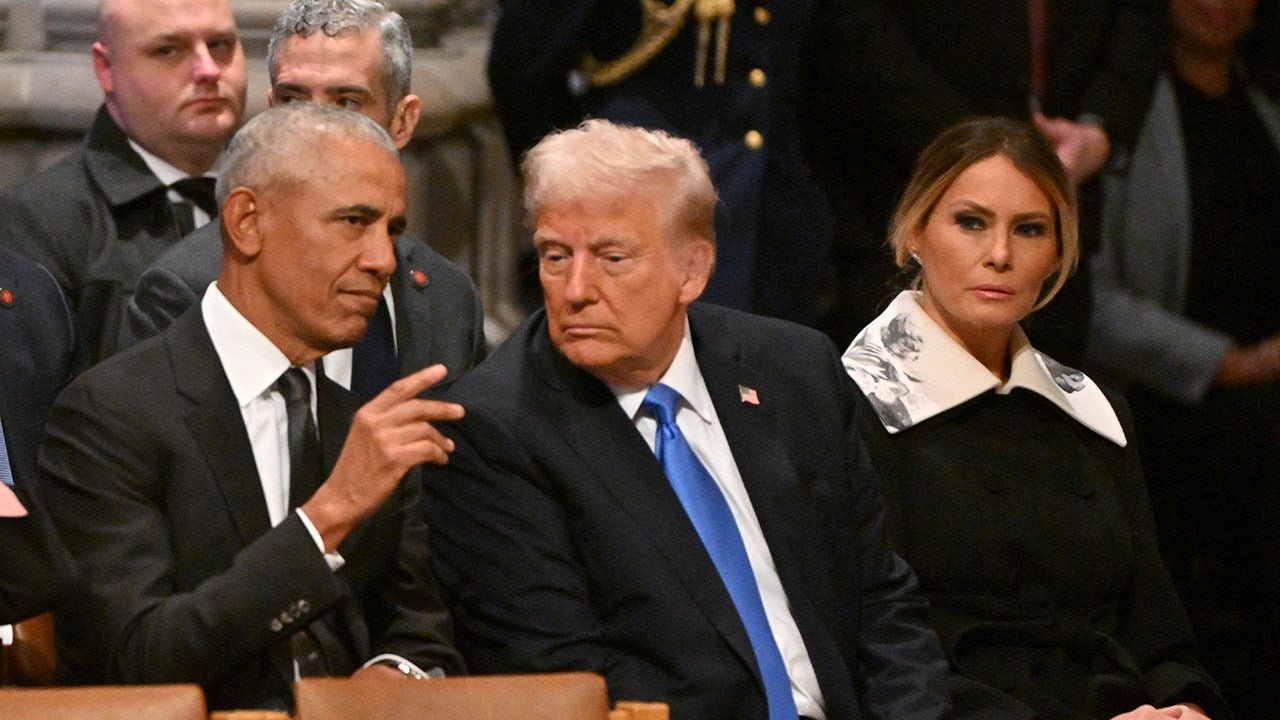
NEWYou can now listen to Fox News articles!
President Donald Trump said Friday that former President Barack Obama «owes me big» following the Supreme Court’s presidential immunity ruling.
Trump on Tuesday claimed that Obama was the «ringleader» of Russiagate, calling for him to be criminally investigated amid new claims that members of his administration allegedly «manufactured» intelligence that prompted the Trump–Russia collusion narrative. Obama has denied the allegations, with a spokesperson for him describing them as «bizarre.»
«It probably helps him a lot. Probably helps a lot. The immunity ruling, but it doesn’t help the people around him at all. But it probably helps him a lot,» Trump said Friday. «He’s done criminal acts, there’s no question about it. But he has immunity, and it probably helps him a lot… he owes me big, Obama owes me big.»
The intelligence community did not have any direct information that Russian President Vladimir Putin wanted to help elect Donald Trump during the 2016 presidential election, but, at the «unusual» direction of then-President Barack Obama, published «potentially biased» or «implausible» intelligence suggesting otherwise, the House Intelligence Committee found, according to a Fox News report earlier this week.
OBAMA DENIES TRUMP’S ‘BIZARRE ALLEGATIONS’ THAT HE WAS RUSSIAGATE ‘RINGLEADER’ IN RARE STATEMENT
Former President Barack Obama speaks with President-elect Donald Trump as they attend the State Funeral Service for former President Jimmy Carter at the Washington National Cathedral in Washington, D.C., on Jan. 9, 2025. (Roberto Schmidt/AFP via Getty Images)
Director of National Intelligence Tulsi Gabbard had declassified a report prepared by the House Permanent Select Committee on Intelligence back in 2020.
The report, which was based on an investigation launched by former House Intelligence Committee Chairman Devin Nunes, R-Calif., was dated Sept. 18, 2020. At the time of the publication of the report, Rep. Adam Schiff, D-Calif., was the chairman of the committee.
The committee focused on the creation of the Intelligence Community Assessment of 2017, in which then-CIA Director John Brennan pushed for the inclusion of the now-discredited anti-Trump dossier, despite knowing it was based largely on «internet rumor,» as Fox News Digital previously reported.
According to the report, the ICA was a «high-profile product ordered by the President, directed by senior IC agency heads, and created by just five CIA analysts, using one principal drafter.»
«Production of the ICA was subject to unusual directives from the President and senior political appointees, and particularly DCIA,» the report states. «The draft was not properly coordinated within CIA or the IC, ensuring it would be published without significant challenges to its conclusions.»
DNI GABBARD CLAIMS ‘DEEP STATE ACTORS’ DIDN’T WANT TRUMP-RUSSIA INFORMATION TO ‘SEE THE LIGHT OF DAY’
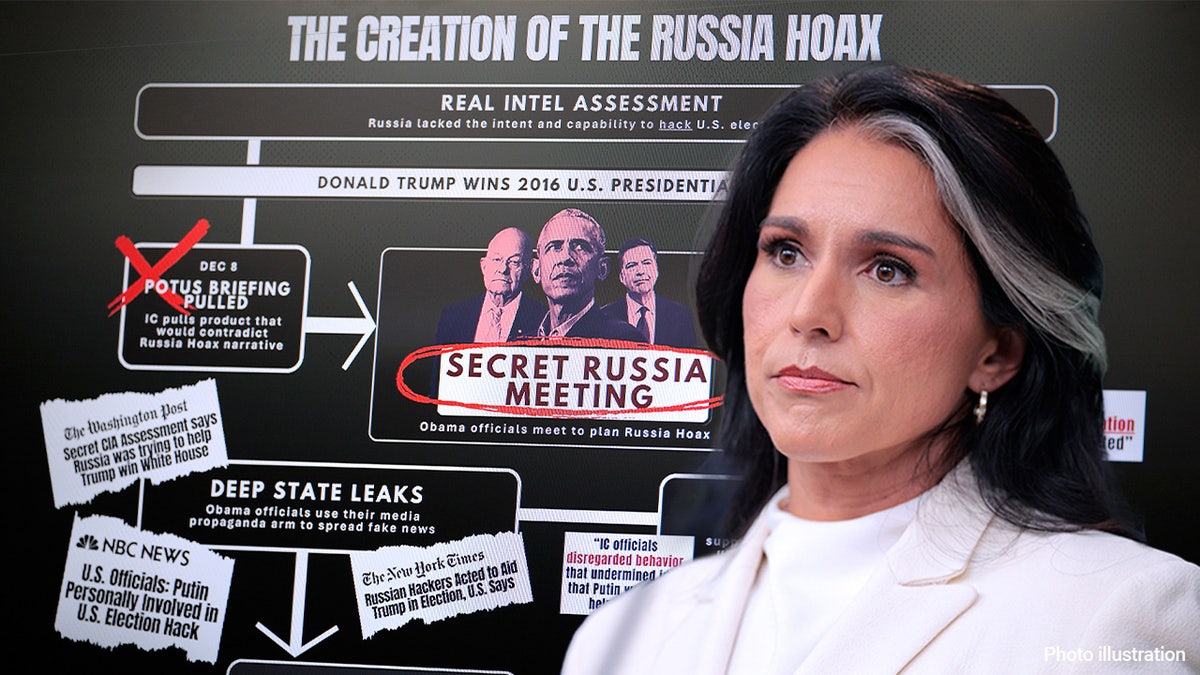
Director of National Intelligence Tulsi Gabbard talks to reporters in the Brady Press Briefing Room at the White House on July 23, 2025, in Washington, D.C., after releasing newly-declassified documents about the Trump-Russia collusion ‘hoax.’ ((Chip Somodevilla/Getty Images | Fox News Digital))
The committee found that the five CIA analysts and drafter «rushed» the ICA’s production «in order to publish two weeks before President-elect Trump was sworn-in.»
In a statement Tuesday, Obama denied Trump’s «bizarre allegations» that he was the Russiagate «ringleader.»
«Out of respect for the office of the presidency, our office does not normally dignify the constant nonsense and misinformation flowing out of this White House with a response,» Obama spokesman Patrick Rodenbush said in a statement. «But these claims are outrageous enough to merit one.»
«These bizarre allegations are ridiculous and a weak attempt at distraction,» Obama’s spokesman continued. «Nothing in the document issued last week undercuts the widely accepted conclusion that Russia worked to influence the 2016 presidential election but did not successfully manipulate any votes.»
Gabbard later told «Jesse Watters Primetime» on Wednesday that there were «deep state obstacles» to releasing her information about the Trump-Russia collusion investigation and that some people within the intelligence community (IC) didn’t want it to «see the light of day.»
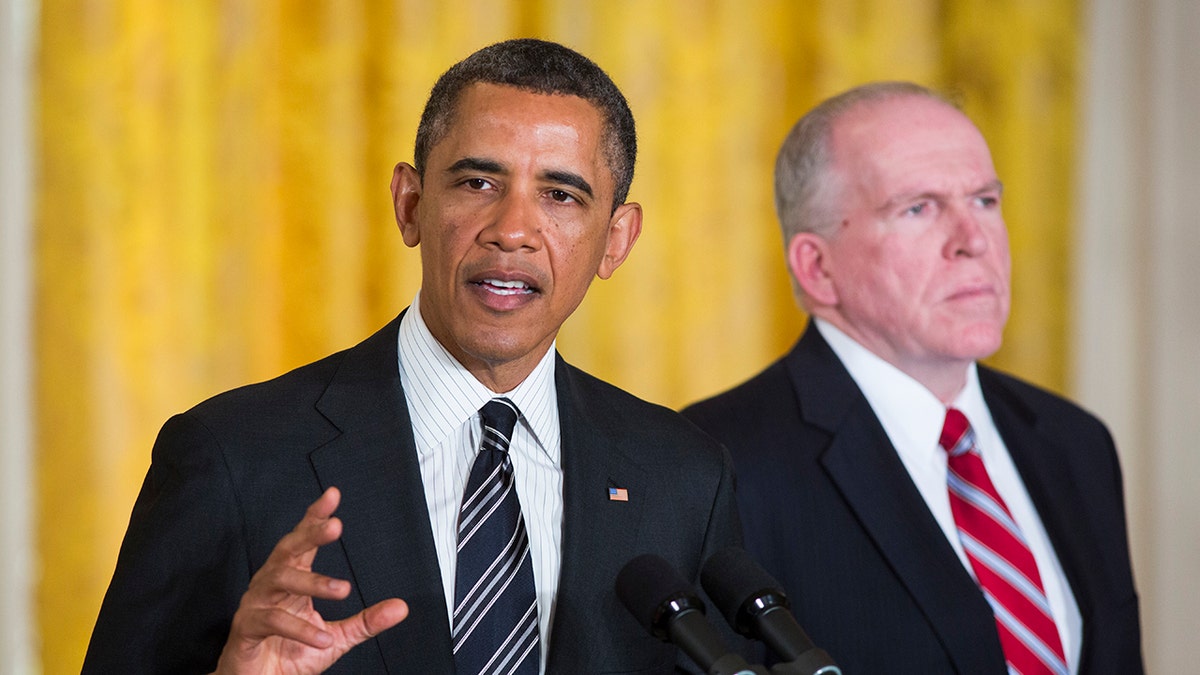
Then-President Barack Obama in the East Room of the White House in Washington, making an announcement nominating John Brennan, right, as the new CIA director. (Brooks Kraft LLC/Corbis via Getty Images)
CLICK HERE TO GET THE FOX NEWS APP
«There are a lot of deep state actors still here within Washington. President Trump wants us to find the truth. I want to find that truth. The American people deserve the truth, and they deserve accountability,» she said.
Fox News’ Brooke Singman and Ashley Carnahan contributed to this report.
INTERNACIONAL
Columbia caminó por la cuerda floja en su camino hacia un acuerdo de 200 millones de dólares con Trump

Justo después del Día de los Caídos, Claire Shipman, presidenta interina de la Universidad de Columbia, visitó a Linda E. McMahon, secretaria de educación del presidente Trump. La institución y la administración Trump se encontraban en un punto muerto por el antisemitismo en el campus, y la mayor parte de los 1.300 millones de dólares en fondos federales para investigación de Columbia estaban en peligro.
Fue una reunión difícil, pero hubo momentos sorprendentemente colaborativos. La Sra. McMahon dijo que no le interesaba destruir la universidad. Empatizó con lo difícil que era dirigir una gran organización. Quería hablar de temas más allá del antisemitismo, como la necesidad de tolerar diversas voces en los campus.
En lugar de desestimar esas preocupaciones de plano, la Sra. Shipman, experiodista y copresidenta del consejo directivo de Columbia antes de asumir la presidencia interina, escuchó.
Fue un momento revelador que contribuyó a los trascendentales acontecimientos del miércoles.
Esa noche, se reveló que Columbia y la administración Trump habían llegado a un acuerdo que permite que cientos de millones de dólares de fondos federales para investigación vuelvan a fluir a Columbia. El acuerdo pone fin a las investigaciones de derechos civiles sobre antisemitismo en la universidad. A cambio, Columbia pagará una multa de 200 millones de dólares al gobierno y 21 millones adicionales para resolver las demandas por discriminación laboral. Un monitor independiente informará al gobierno sobre el cumplimiento del acuerdo por parte de la universidad.

Aunque hubo aspectos en los que no coincidieron, la Sra. Shipman y otros líderes de Columbia coincidieron en gran medida con Washington en que existía un problema de antisemitismo en el campus. Según una encuesta reciente encargada por Columbia, el 62 % de los estudiantes judíos del año pasado afirmaron no sentirse aceptados por su identidad religiosa en la universidad. Algunos consideraban que también existía un problema más amplio de intolerancia, ya que demasiadas personas optaban por excluir, en lugar de interactuar, con otros puntos de vista.
Así pues, la Sra. Shipman buscó lo que llamó las “semillas” de la verdad en los asuntos citados por la Casa Blanca, incluyendo lo que percibía como una ortodoxia académica en el campus o la incapacidad de escuchar otras voces. Ella y otros líderes de Columbia se convencieron de que podían negociar un acuerdo con Trump para abordar los aspectos del campus que, según ellos, estaban rotos, siempre y cuando no traspasaran sus límites ni comprometieran la libertad académica.
El acuerdo fue inmediatamente criticado por muchos, tanto dentro como fuera de Columbia, por considerarlo una cesión ante la administración Trump. La misma táctica de retener fondos para investigación científica para presionar a Columbia por los disturbios en el campus probablemente era ilegal, según dictaminó un juez de Massachusetts. Sin embargo, algunos en el campus, en particular aquellos preocupados por el futuro de la investigación científica, aplaudieron el acuerdo, con la esperanza de que permitiera a Columbia recuperar su estabilidad.
“Entiendo perfectamente el deseo de una narrativa simple: capitulación versus valentía, o hablar versus luchar”, declaró la Sra. Shipman en una entrevista con The New York Times el miércoles. “Miren, como experiodista, me inclino por esos temas. Pero supongo que todos sabemos que las situaciones de la vida real son profundamente complejas. Y realmente diría que proteger nuestros principios, lenta y cuidadosamente mientras estabilizamos la institución, también requiere valentía y está lejos de ser una capitulación”.
Este relato de cómo y por qué Columbia decidió llegar a un acuerdo con la administración Trump en lugar de litigar se basa en entrevistas con seis personas con conocimiento de las negociaciones, la mayoría de las cuales hablaron bajo condición de anonimato para poder hablar de conversaciones privadas.
Columbia ha enfrentado disturbios en el campus desde los ataques de Hamás del 7 de octubre de 2023. El estallido de sentimiento del lado pro-palestino, que aprovechó el momento como una oportunidad para pedir la liberación de Palestina, tomó a muchos por sorpresa. A las pocas semanas de los atentados, mientras los estudiantes judíos e israelíes aún lloraban a sus muertos, estallaron en el campus enfrentamientos a gritos entre estudiantes proisraelíes y propalestinos, acusándose mutuamente de apoyar el genocidio.
El movimiento estudiantil propalestino de Columbia galvanizó el campus, logrando el apoyo de miles de personas. La mayoría de los estudiantes que votaron en referendos no vinculantes apoyaron la desinversión en Israel, cuyas bombas caían sobre Gaza. Sin embargo, algunos estudiantes judíos se sentían cada vez más aislados y asustados. Cánticos como “no queremos sionistas aquí” parecían dirigidos a ellos personalmente.
Minouche Shafik, entonces presidenta de Columbia, no pudo controlar el creciente activismo estudiantil y se negó a llegar a un acuerdo con los manifestantes para desinvertir. Decretó el cierre del campus y llamó al Departamento de Policía dos veces para poner fin a las manifestaciones. Apenas unas semanas antes del inicio del nuevo año académico, en agosto de 2024, dimitió. Aun así, los problemas de Columbia siguieron siendo en gran medida un asunto interno, hasta que el presidente Trump fue elegido.

El 7 de marzo, el gobierno federal canceló o congeló más de 400 millones de dólares en fondos de investigación, argumentando que Columbia ya no cumplía los requisitos para recibir el apoyo debido a su presunta tolerancia al acoso antisemita en el campus. Fue la primera universidad en ser sancionada de esta manera. Harvard, Cornell y Northwestern le siguieron poco después. Un grupo de trabajo sobre antisemitismo que Trump reunió tras llegar a la Casa Blanca emitió una lista de nueve demandas que reflejaban las peticiones de algunos grupos judíos en el campus, solicitando más restricciones a las manifestaciones, mayor supervisión académica y una disciplina más estricta.
La junta directiva de Columbia, compuesta por 21 miembros, en consulta con los abogados de la universidad, decidió negociar. Los abogados informaron a la junta que demandar probablemente traería beneficios a corto plazo, pero que el gobierno aún podría excluir a Columbia de la consideración para futuras subvenciones. Esto generaría una situación extremadamente inestable, que pondría en riesgo miles de millones de dólares de importantes fondos de investigación.
Durante la presidencia interina de Katrina Armstrong, la junta llegó a un acuerdo con el que consideró viable. La universidad modificó cada exigencia de forma que no comprometiera sus valores fundamentales ni la independencia académica.
En lugar de una prohibición total del uso de mascarillas, por ejemplo, se exigiría a los manifestantes enmascarados que mostraran una identificación cuando se les solicitara. En lugar de someter al departamento de Estudios de Oriente Medio a administración judicial, una medida que eliminaría su independencia, un nuevo vicerrector revisaría el trabajo del departamento, junto con el de otros departamentos.
“Si podemos hacer algo que ya teníamos pensado hacer sin tener que litigar y restaurar lo que nos importa aquí, ese es, en nuestra opinión —o en la mía—, el mejor camino”, declaró Keith Goggin, miembro del consejo, en una asamblea pública del senado universitario en primavera. “Y quizá no podamos seguir ese camino, pero ahí estamos hoy”.
La Sra. McMahon, secretaria de educación, afirmó públicamente que Columbia iba por buen camino. Sin embargo, días después, la Dra. Armstrong fue duramente criticada por cómo describió el acuerdo en una reunión privada del profesorado. Una transcripción de la reunión se filtró a los medios, insinuando que estaba minimizando su compromiso con cambios reales. A los pocos días, renunció y la Sra. Shipman la sucedió.
A principios de abril, la Casa Blanca presentó a Columbia los términos de un decreto de consentimiento, un plan de mejora del rendimiento legalmente vinculante que generalmente implica una orden judicial y que dejaría a Columbia bajo supervisión federal durante los próximos años. El plan, mucho más estricto que el acuerdo final, se filtró a la prensa y se presentó como inminente, a pesar de que las negociaciones continuaban.
El 11 de abril, Harvard publicó su propia carta de la Casa Blanca, que exigía aún más a la universidad que recuperara miles de millones de dólares en financiación para la investigación. Sintiendo que su independencia estaba en juego, Harvard declaró que demandaría, no negociaría. De repente Washington tuvo ante sí una situación más urgente y cambió su enfoque.
El tiempo extra ayudó a Columbia a consolidar su estrategia de negociación. A medida que se retiraban miles de millones de dólares de Harvard y se ponía en duda su capacidad para matricular estudiantes internacionales, lo que estaba en juego se hizo evidente. También se hizo evidente internamente en Columbia que el golpe a su iniciativa científica era mucho mayor que los 400 millones de dólares originales.
Columbia ahora afirma que la mayor parte de sus 1300 millones de dólares en subvenciones federales anuales se había congelado o suspendido. También se le prohibió a la universidad competir por nuevas subvenciones. En mayo, cerca de 180 personas fueron despedidas. Cada día, los científicos recibían nuevas ofertas y tenían la incertidumbre de si Columbia seguiría siendo un centro de investigación importante.
El gobierno continuó aumentando la presión, abriendo nuevas investigaciones sobre violaciones de los derechos civiles contra estudiantes judíos en Columbia. A finales de mayo, el gobierno federal declaró a Columbia violando las normas de derechos civiles por “actuar con deliberada indiferencia” ante el acoso a estudiantes judíos. En junio, el Departamento de Educación envió una carta al organismo que otorga a Columbia y otras escuelas un sello vital de aprobación (la acreditación) y advirtió que la universidad podría perder esa credencial vital, clave para recibir ayuda federal para estudiantes.

Todos estos eran problemas muy reales que debían resolverse con el gobierno.
“Pensamos que tenía sentido seguir dialogando mientras se lograran avances”, dijo la Sra. Shipman.
Mantuvo múltiples conversaciones con la Sra. McMahon y miembros de su personal, según una persona con conocimiento de las conversaciones. La Sra. Shipman también habló con abogados de las agencias que integran el grupo de trabajo sobre antisemitismo de la administración Trump, así como con representantes de la Casa Blanca y el Departamento de Justicia.
La Sra. Shipman trabajó con los fideicomisarios y un pequeño equipo académico que reunió. Este incluía a un experto en negociación, quien les indicó que es posible llegar a un acuerdo, incluso con un oponente con el que se tienen profundas diferencias, siempre que se mantengan los principios fundamentales.
El trabajo fue minucioso. “En realidad, es un acto de equilibrio”, dijo la Sra. Shipman, aproximadamente una semana antes de que se anunciara el acuerdo. “Queremos este acuerdo, lo necesitamos. Queremos recuperar una buena relación con el gobierno y volver a ser un socio de investigación. Y, sin embargo, debemos proteger algunos aspectos fundamentales de nuestra identidad como institución”. Se selló un acuerdo.
Pareció producirse un avance en las negociaciones cuando la Casa Blanca propuso multas monetarias para ayudar a resolver las quejas sobre derechos civiles. Las partes también acordaron nombrar a un monitor independiente, a quien elegirían mutuamente. El monitor garantizaría el cumplimiento de los términos del acuerdo.
Columbia adoptó un enfoque práctico respecto a la enorme tarifa del acuerdo. El dinero era menos importante que los valores fundamentales: Columbia consideraba que este acuerdo no dictaría quién enseña, qué enseña ni qué estudiantes son admitidos.
“No se trata de una cantidad de dinero que nos quiebre, pero los valores fundamentales son la clave”, dijo un alto administrador académico de Columbia involucrado en las negociaciones.

A juicio de los negociadores de Columbia, gran parte de lo acordado —el compromiso de respetar las leyes de derechos civiles y no participar en prácticas ilegales de diversidad— habría sido necesario de todos modos bajo la administración Trump. La mayoría de las reformas internas, como la centralización del control disciplinario estudiantil y el nombramiento de al menos 36 agentes de seguridad con facultades de arresto, son cambios a los que ya se habían comprometido.
Para la semana pasada, se estaba cerca de un acuerdo. Un equipo de funcionarios y abogados de Columbia, incluida la Sra. Shipman, se reunió en una sala de recepción diplomática de la Casa Blanca durante una hora con May Mailman, estratega política, y otros funcionarios de Trump para discutir algunos detalles finales.
“El daño a Columbia no fue especulativo. Fue real y real”, declaró Jeh Johnson, copresidente de la junta y secretario de Seguridad Nacional durante la administración Obama.
“Sin una resolución con el gobierno, nos enfrentábamos a la pérdida de nuestra actividad de investigación tal como la conocemos, incluyendo la salida de nuestros mejores científicos y, sin duda, más despidos”, declaró el Sr. Johnson. “Teníamos que detener la hemorragia”.
© The New York Times 2025.
Crime,Asylum / Immigration / Refugees,North America,NEW YORK

 ECONOMIA3 días ago
ECONOMIA3 días agoEl consumo en Argentina crece 4% en junio, ante menor inflación y más crédito

 POLITICA2 días ago
POLITICA2 días agoMáximo Kirchner declaró una fortuna de 8.300 millones de pesos: representa un 76% más que el año anterior

 POLITICA23 horas ago
POLITICA23 horas agoLa justicia de Santa Cruz desafío a la Corte Suprema e incluyó a Cristina Kirchner en el padrón electoral





